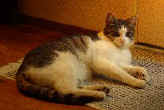BOARDING CATTERY SANITATION
The following information is adapted from a Koret Shelter Medicine Program article titled " Cleaning and Disinfecting in Shelters " with a very informative discussion of disinfectant products and procedures for catteries and cat boarding kennels. Catteries can prevent what can’t be killed or cleaned, by requiring inoculation, quarantine of 1-2 weeks for parvo/panleuk, carefully screening for ringworm and/or using prophylactic treatment for hard-to-kill pathogens in hard-to-clean areas including feline group housing, play areas, cat trees, and staff offices. Effective Boarding Cattery sanitation requires using effective products, cleaning where it counts, and minimizing stress and mechanically transmitted germs. Cleaning with soaps and detergents suspends dirt and grease but does not kill harmful microorganisms. Degreasers are more powerful soaps/detergents specially formulated to penetrate layers of dried on body oils and other greasy debris. Only disinfectants kill harmful microorganisms but most do not remove dirt or grease. Although a few disinfectants do have some detergent/cleaning activity, bleach has none. In order to be effective, all disinfectants MUST be used at the correct concentration and be applied to and remain on a basically clean, non-porous surface, free of organic matter for an adequate contact time, usually at least 10 minutes. Disinfectants and detergents can cancel each other’s actions, and should not be mixed unless specifically directed by the manufacturer. Cat boarding kennel staff should focus on the most important areas for cleaning i.e.: Cat condo housing between occupants, paying special attention to kitten, and sick cat condos, high contact surfaces such as get-acquainted-rooms, aisles, exercise areas, door knobs, telephones, etc, keeping hands, arms, clothing and feet clean (either by cleaning or by use of protective garments), and daily cleaning and disinfection for pathogens of special environmental concern, e.g. ringworm, parvovirus. Even healthy looking cats can spread disease or fleas to other cats. Cats that are just about to get sick, recently recovered cats, and chronically infected cats may all be infectious to other cats but not currently showing signs of disease. Common Boarding Cattery objects such as staff hands and clothing, contaminated surfaces, food and water dishes, etc. can mechanically transmit disease (see www.glogerm.com) while incorrectly performed disinfection and cleaning can be ineffective or may serve to spread disease. Disinfectants can even cause significant harm if used incorrectly. Boarding Catteries should be familiar with several disinfectants suitable for a range of uses. ONLY disinfectants specifically designed for use around cats and tested as safe and effective against the pathogens of concern should be used in cat boarding kennels. After all, Cats have full body/oral contact with whatever chemicals are in the environment by touching or rubbing surfaces then licking themselves.
|
